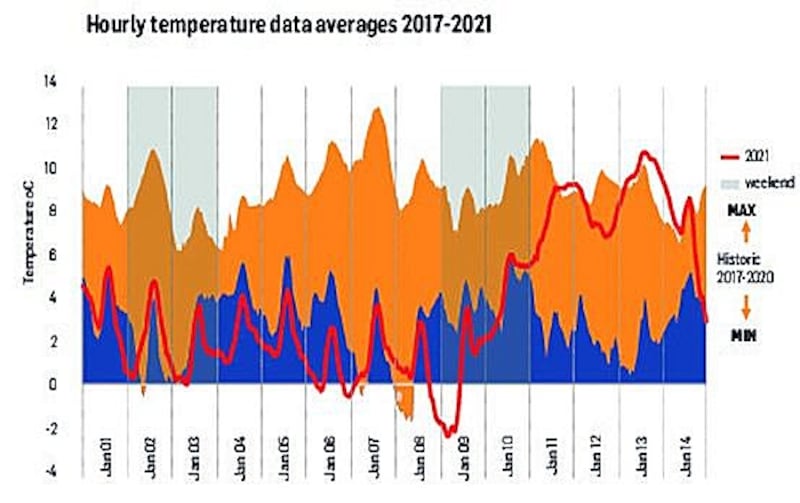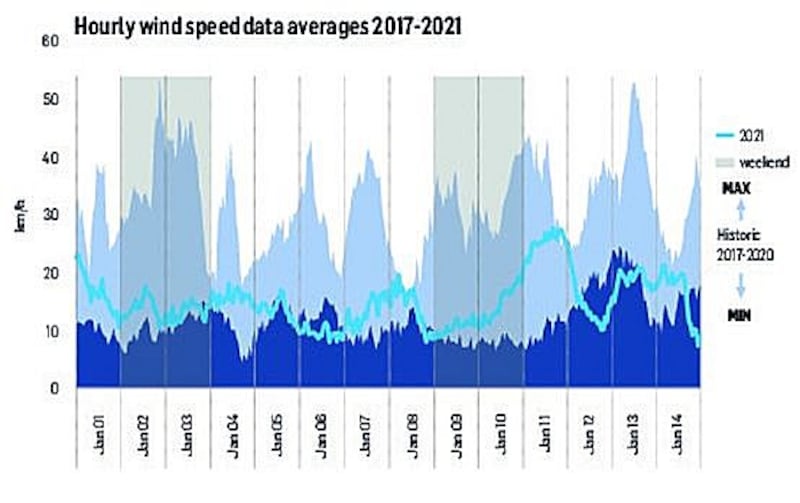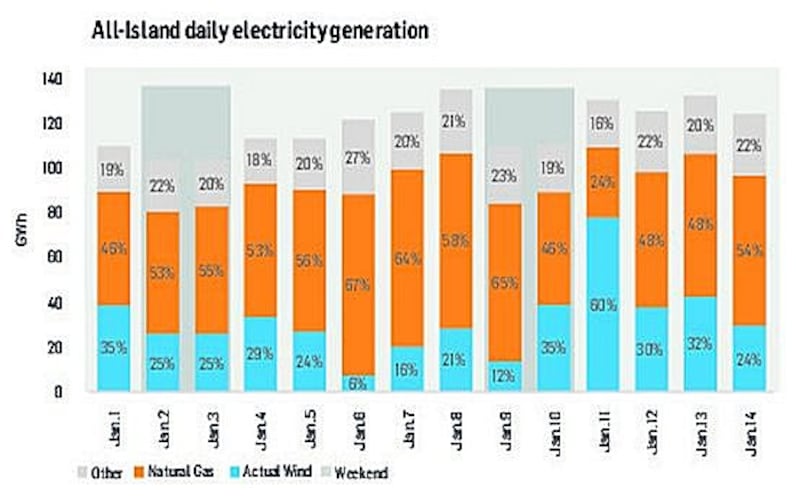The recently published IPCC climate science report published by the UN is a global wake-up call, highlighting the urgent need for rapid and significant reductions in greenhouse gas emissions. As we move towards zero carbon emissions, each sector – transport, agriculture, heating and electricity – will face their own challenges.
Regarding electricity supply, one key challenge is to ensure the power system can meet our growing electricity demands, while also increase the amount of low and zero carbon electricity into the supply mix.
Two key areas of projected growth in electricity demand arise, firstly, from using electricity for things we generally use oil or gas for, such as transport (electric vehicles) and heating (heat pumps), as part of our climate action strategy. Secondly, the increasing number of operational data centres in Ireland to meet growing data flow demands arising from the usage of cloud services by citizens and businesses.
This raises questions regarding the adequacy of our electricity supply to meet these growing demands. This is not a new question but is coming into sharper focus as we reduce our electricity generation from peat and coal-fired power stations generation, while simultaneously increasing our electricity generation from variable wind energy. In addition, two large natural gas power plants, Whitegate in Cork and Huntstown in Dublin, have been out of service since last winter, adding to concerns regarding risk of supply shortages this winter.

The good news is we have been very successful over the past 20 years in reducing electricity-related emissions, while continuing to meet increasing electricity demands. Ireland’s electricity-related carbon dioxide emissions reduced by 42 per cent in this period, while electricity demand increased by 40 per cent.
A key part of this success story was the significant growth in wind energy. This achievement was driven by a combination of scientific research underpinning successful policies, together with the establishment of a successful wind energy sector, and delivery of effective engineering solutions by EirGrid, the electricity transmission system operator and ESB Networks, the distribution system operator.
It has been, and will continue to be, challenging to do this. This challenge is often understated because energy systems' resilience is invisible to most and can be taken for granted until there is a shortage in supply or sharp rise in price. To understand how resilient our energy systems are, MaREI Centre researchers carried out an analysis of wind, temperature, electricity and gas data covering a challenging period earlier this year.

During the first two weeks in January 2021, Ireland experienced both low winds and cold weather. As shown in the hourly temperature graph, temperatures in early January 2021 (indicated by the line) were colder across Ireland relative to the same period for the last four years (2017-2020, indicated by the shaded area). This increased the demand for electricity until temperatures began to rise again from January 9th.
This cold spell also corresponded with low wind speeds across the country compared with previous years which affected the availability of wind-generated electricity during this period, as shown in the hourly wind speed graph. The shaded area shows the wind speeds for January 1st-14th over the period 2017-2020 and the line traces the lower wind speed data in 2021.
The electricity system demonstrated resilience in successfully meeting demand requirements despite the cold weather and wind variations.
During this two-week period we witnessed record levels of electricity demand and of electricity generation due to this combination of weather conditions and other factors. As shown in the graph of all-island electricity generation, there were significant variations in wind power, varying from 6 per cent (7 GWh) of total system generation on January 6th to 59 per cent (78 GWh) on January 11th for the all-island system – 1 GWh = 1 Giga Watt hour, which is 1,000 kWh (kilo Watt hour, ie the unit of electricity on our bills).

Natural Gas was the main source of power to balance the variation in wind and meet the required demand levels. Electricity from natural gas varied from 67 per cent (81 GWh) to 24 per cent (31 GWh) over this period. The flexible and responsive role that natural gas plays in our energy systems has been key in ensuring the resilient supply of electricity when required.
As Ireland transitions to an energy system with increased electrification of heat and transport, coupled with increasing levels of renewable energy, it is essential that robust solutions are put in place to ensure continued energy system resilience.
These solutions will benefit not only Ireland but have the potential for significant impact internationally through the transfer of the associated scientific knowledge and learnings. MaREI Centre has undertaken scientific research with the Electricity Association of Ireland to explore electricity pathways up to 2030 for Ireland. This analysis considers the Government ambition to grow wind energy and solar power such that the annual average share of renewable energy to our electricity supply increases from 40 per cent to 70 per cent.
To test resilience to weather extremes this analysis examined more than 250,000 hours of weather data across the island of Ireland and demonstrated how flexible the future power system will have to be to deal with a wide and diverse variation in weather events.
How important is wind energy?
At times, the system will produce more renewable generation than can be used, stored or exported. Yet, it must be sufficiently resilient to deal with periods of low regional wind generation and extremes such as periods where there is very little power being supplied by renewables. Conventional generators and interconnectors meet the bulk of electricity demand during periods of low regional wind availability helped with smart loads, demand side response units and batteries.
As noted in The Irish Times, this research also found that while wind energy will be the main driver of decarbonisation, the reliable delivery of electricity requires conventional generation to play a necessary role providing back-up. The required gas-fired electricity generation capacity in 2030 will need to be similar to today, but gas-fired generation will operate less. Options to decarbonise conventional generation need to be examined now to ensure investment and action in a timely manner.
Coming back to the short-term risk to supply disruptions this winter there are a number of key steps that require urgent attention.
Firstly, pulling out all the stops to get the two gas-fired power stations in Whitegate and Huntstown back on line. Secondly, ensuring that as many as possible demand-response options are in place to manage times when electricity can be reduced or cut for specific purposes, in a planned way. Thirdly, accelerate wind and solar energy capacity growth to increase electricity supply. Fourthly, reintroduce existing plants, if necessary, that were being scaled back (this is already happening for the Moneypoint coal-fired power station).
Regarding the growing number of data centres, this is becoming a polarised debate with binary preferences (ie permit or do not permit) coming to the fore. Another path to consider is to allow all potential new large electricity users to connect to the electricity network on condition that they meet their own electricity requirements with zero emissions electricity in times when there is not sufficient wind or solar generation.
Several data centres are already contracting wind farms to supply their electricity on an annual basis via corporate power purchase agreements but matching this demand 24 hours a day, seven days a week with zero emissions power would significantly reduce the emissions impact while also reducing stress on the grid at time of high demand.
- Prof Brian Ó Gallachóir is director and Dr Paul Deane is senior research fellow at MaREI, the SFI research centre for energy, climate and marine








